Hi folks. Joe Lindsey here, long time reader /first time reviewer (at Escape Collective, anyway). Product testing was for many years part of my work as a cycling journalist, but in recent times I’ve moved away from that some. I may do more again, but when James asked me to contribute to this series, I initially froze as I didn’t really have much “new” stuff to talk about. Thankfully, it doesn’t have to be new, which is good, because some of these items have been in my gear closet for a decade or more. My barometer for great products isn’t whether they make me faster or better; it’s whether they increase my fun quotient or somehow enable me to spend more time on the bike than I otherwise would. So if there’s a theme to this roundup, that’s it, including a couple of products that were new-to-me this year and have, so far, more than met that bar.
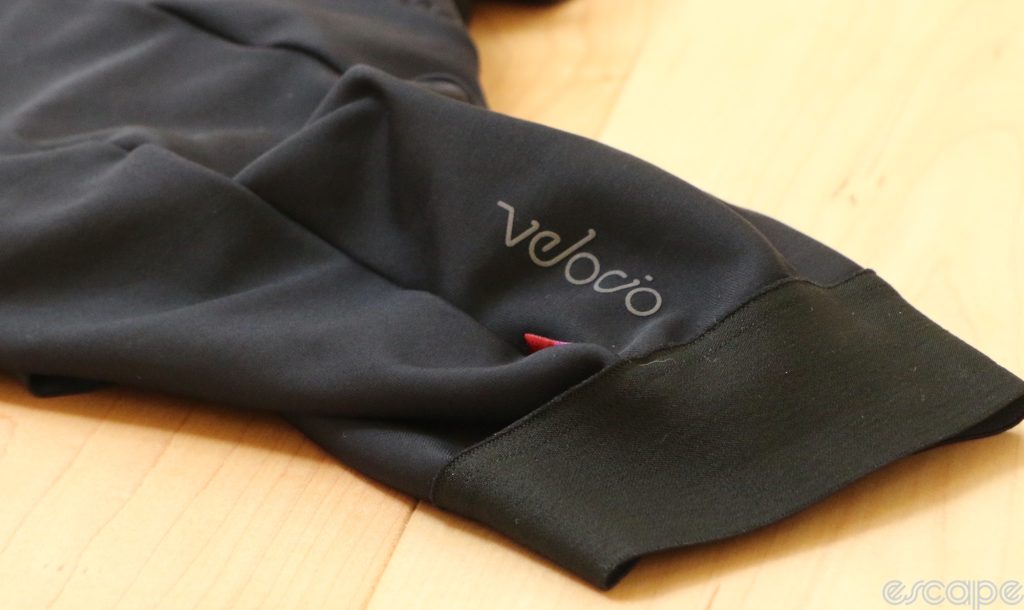
Velocio thermal bib shorts
At first blush, “thermal shorts” seem like an oxymoron, right? An April Fool’s joke months too early, or just another way for the bike industry to part credulous mooks like me from their money. And yet, allow me to extol the virtues of the platypus of cycling apparel.
Why not just wear tights over your summer bibs? I have (and still own a couple pair), but with the double layers there’s always a seam in the wrong spot. And if “belt and suspenders person” is a euphemism for being well-prepared, what’s a suspenders-and-more-suspenders person, besides a candidate for spinal disc compression? OK then, smart guy, what about bib tights with integrated chammy? Nope; the pad is always caught in a tug-of-war between the suspenders and the legs, and the result is permanent bunchy-diaper feel.
Thus, thermal bibs, paired with thermal-weight knee warmers. You can go leg warmers too. Thermal bib shorts are the best of bibs and the best of tights in one package. You get the unsurpassed comfort of a quality bib short, and your ass doesn’t turn into a freezer-burned ham below 40°F. That’s about my cutoff for regular vs. thermal shorts, by the way, although everyone’s thermostat is different, and Colorado’s dry winters help lower my setpoint.
I see you’re unconvinced. So was I, once. My first ride in thermal bibs was a rather cheap pair of eight-panel (remember those!?) Giordanas that came as part of a team kit. But even without optimal fit, one chilly ride where I wasn’t constantly fidgeting in the saddle to get a seam out of my crack or settle a bulky, out-of-place chamois, and it didn’t take my butt cheeks a week to thaw, was enough to get me a lifetime contract on team thermal bib.
Sadly, few brands make these, and not all that do make good ones. My fave of the handful of brands I’ve tried? Velocio’s thermal bibs feature the same construction as the brand’s summer shorts, with a weather-resistant, fleecy thermal fabric that wraps you in a warm hygge (shit, sorry – that’s the brand copywriting reflex there). They’re made in eight (eight!) sizes up to 4XL (and eight sizes to 3XL for women). The cross-strap suspender design is comfortable and fits well with layers, the leg elastic is wide and – this is key – stretches enough to easily adjust around warmers, and the Cytech chamois pad is fantastic. They’re not cheap, but even a single pair has helped extend my comfortable riding range so that there are more conditions I will ride in than I won’t, and after three seasons of regular use (machine wash, hang dry) the fabric has no visible sign of wear. As a guy who’s allergic to the stationary trainer, that’s all well worth the price of entry.
Price: US $239
www.velocio.cc
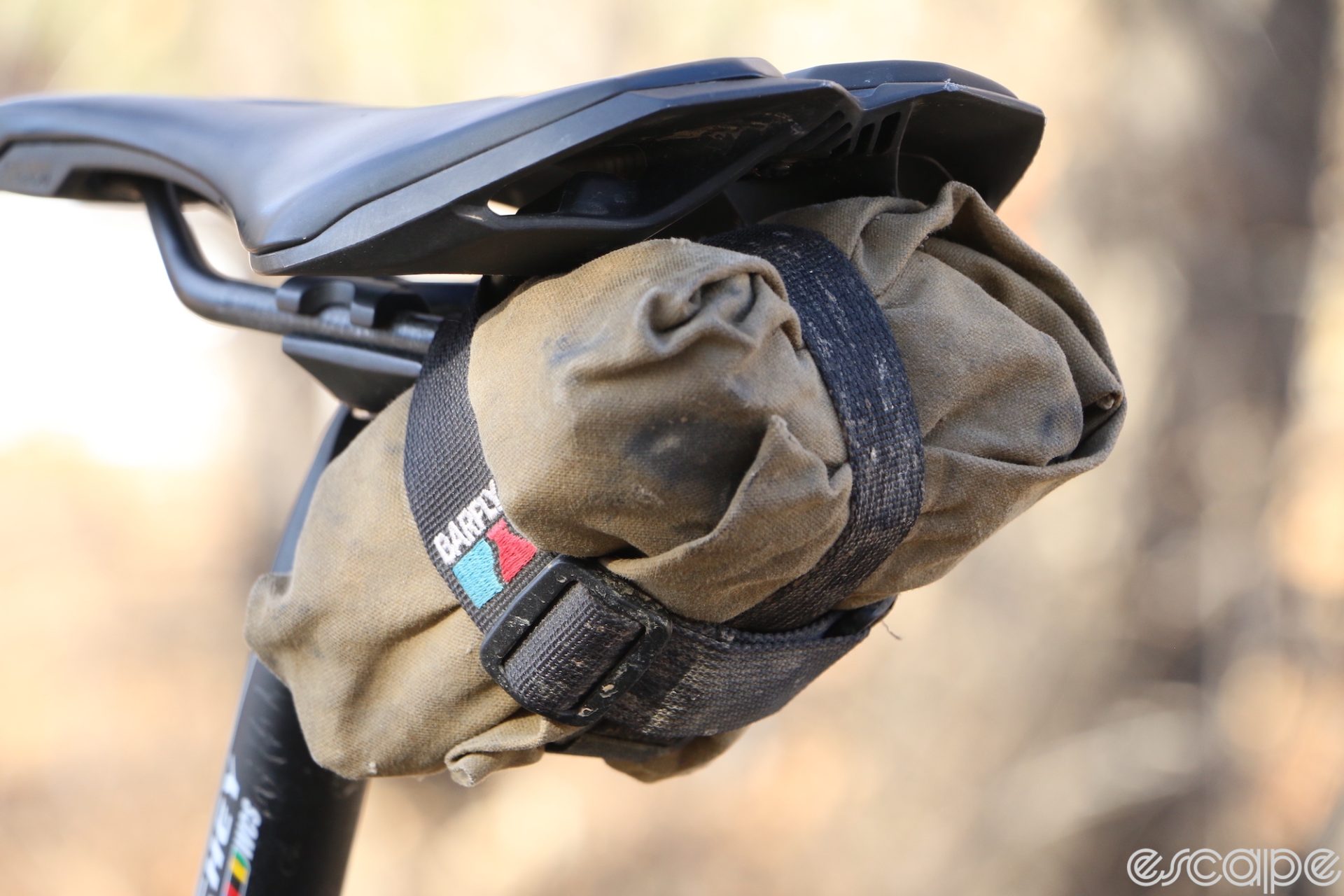
Barfly seat pack strap
Opinions on the right seat pack – size, features, even whether to even use one – are as varied as the number of options on the market. Me: small-ish pack filled with all the essentials and a few thoughtful adds, lashed tight to the rails for absolutely zero – I mean zero – sway, movement, or rattles, and won’t look like trash or wear a hole after one season.
My pack: a generous square of waxed cotton canvas that is the same age as Jonny Long and nearly as ruggedly handsome, just without the frosted tips.
It expands or shrinks to the perfect size for whatever you’re carrying. It makes a handy little mat to hold small bits during road or trailside repairs. Mine cost $4 from Rivendell, which sadly no longer sells the item, but you can find waxed cotton fabric in various colors, often to match or accent your bike, for US $15 a yard at craft stores.
Problem: how to attach it to the bike.
For years I used a leather toe strap. But even the most careful burrito-style wrap can shift on bumpy terrain with a single strap. The strap walks through the buckle and loosens. Things start to rattle. The load pooches out above or below the strap, like Patrick Lefevere’s belly over his belt after a particularly memorable Michelin-starred meal with the Evenepoels. If you’re not watchful, the whole thing can go flying.
The solution: Barfly’s seat pack strap.
Technically this comes as part of its Hopper saddle bag, which itself is an industrial-strength coffee bag. The bag’s fine, nothing special. But the whole package is $20 and the strap alone is worth that. The strap’s secret sauce (well, actually not all that secret since you can SEE IT) is it secures the bag on two axes: side-to-side, and front-to-back. Ye gods, what will we think of next?
The genius of this particular little design tweak is the bag’s contents can’t shift around; it’s the most secure attachment I’ve ever found. Yes, it’s Velcro. Mine’s a decade old and still fastens fine, and doesn’t chew at my shorts. It’s light. It expands to fit various bag or tool-wrap sizes, and it’s agnostic about what bag you use. It looks slightly less tech-y than Silca’s Boa strap, which is also a good utility-style pack strap but tightens on only one axis (Josh, if you’re reading: get me two).
For about $35 (the cost of the Hopper combo and a big square of waxed canvas that makes multiple tool wraps), you get a versatile, adjustable, stylish seatpack that will last you years. What’s not to love?
Price: US $20 (Barfly’s international distribution is spotty)
www.barflybike.com
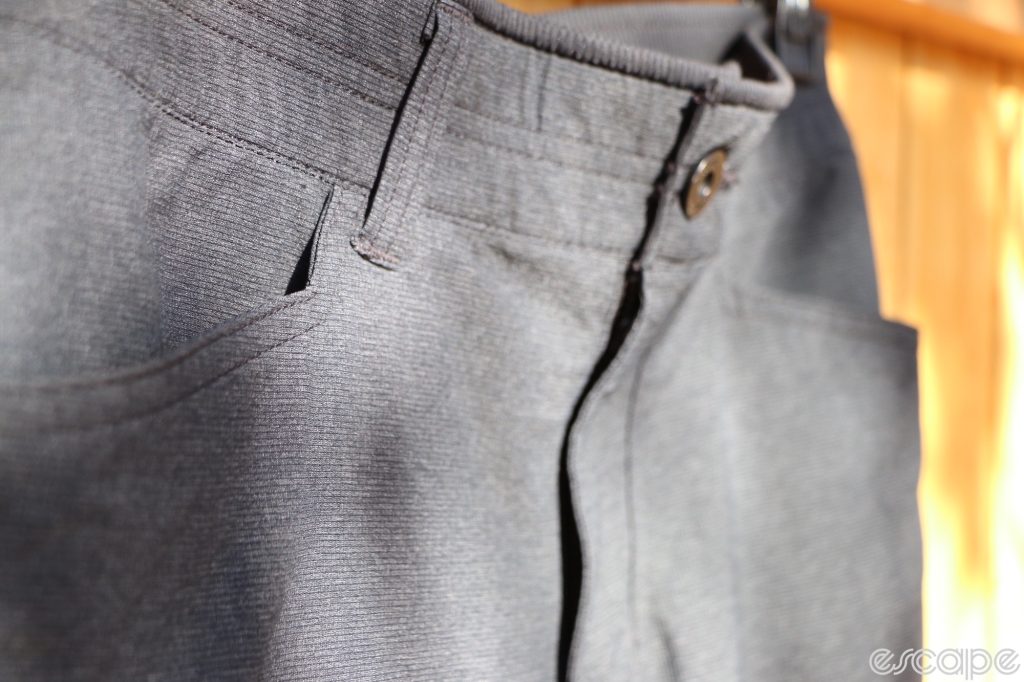
Kühl Deceptr pants
Last summer, my wife and I took a long-delayed vacation to Europe, and as one does for a big trip, I realized I had a few items on my shopping list. A big one: travel pants. When you think “travel pants” you probably have in mind the goofy convertible monstrosities with a zipper to turn them into shorts. That’s exactly what I didn’t want. I was looking for pants because I didn’t want to be the idiot American traipsing through museums and cathedrals in shorts or convertible pants. (I already looked like a tourist; I didn’t need to call more attention to myself.)
After trying on styles from about a dozen brands, I cautiously dropped $100 on a pair of Kühl’s Deceptr. At least walking around my local REI in them, they seemed to check a bunch of boxes: lightweight and fast-drying, a good bit of stretch for comfort; a tough fabric that would resist wear and stains; just enough pockets, in the right places; and a subtle tapered fit that looked flattering on my cycling-shaped lower body.
A c-note is rather a lot to spend on such a narrow-purpose purchase, but in the weeks before the trip, the Deceptr quickly became a favorite everyday wear item. I will confess to sort of losing my mind and buying two more pair in different colors. Je ne regrette rien.
The pants were fantastic for the trip: packable and somehow impervious to odor; comfy even squeezed into tight plane and train seats, lugging bags across cobbled streets, and hiking a million steps on walking tours. Style-wise, they occupy a liminal space that’s casual yet refined: not jeans, not khakis, not slacks, and yet somehow all three at once.
But where they truly came into their own was riding around town on errands and other urban trips. The four-way stretch is perfect for pedaling, with none of the bunching or binding of even stretch denim. The fabric is lightweight and cool even on hot days. The tapered fit meant I didn’t have to cuff the ankle hem to keep the fabric from getting into the chain. And while it probably wasn’t Kühl’s design intent, the gusseted crotch meant no irritating seams between butt and saddle, which is pretty key when you’re going chammy-free.
Best of all, these come in six colors and 11 sizes from 28” waist all the way up to 42”, and in three inseam lengths. I’ve never been a jeans-and-black-t-shirt “uniform” guy, but if I had to pick one pair of pants to wear every day, these are it.
Price: US $100 (available in US and Canada)
www.kuhl.com
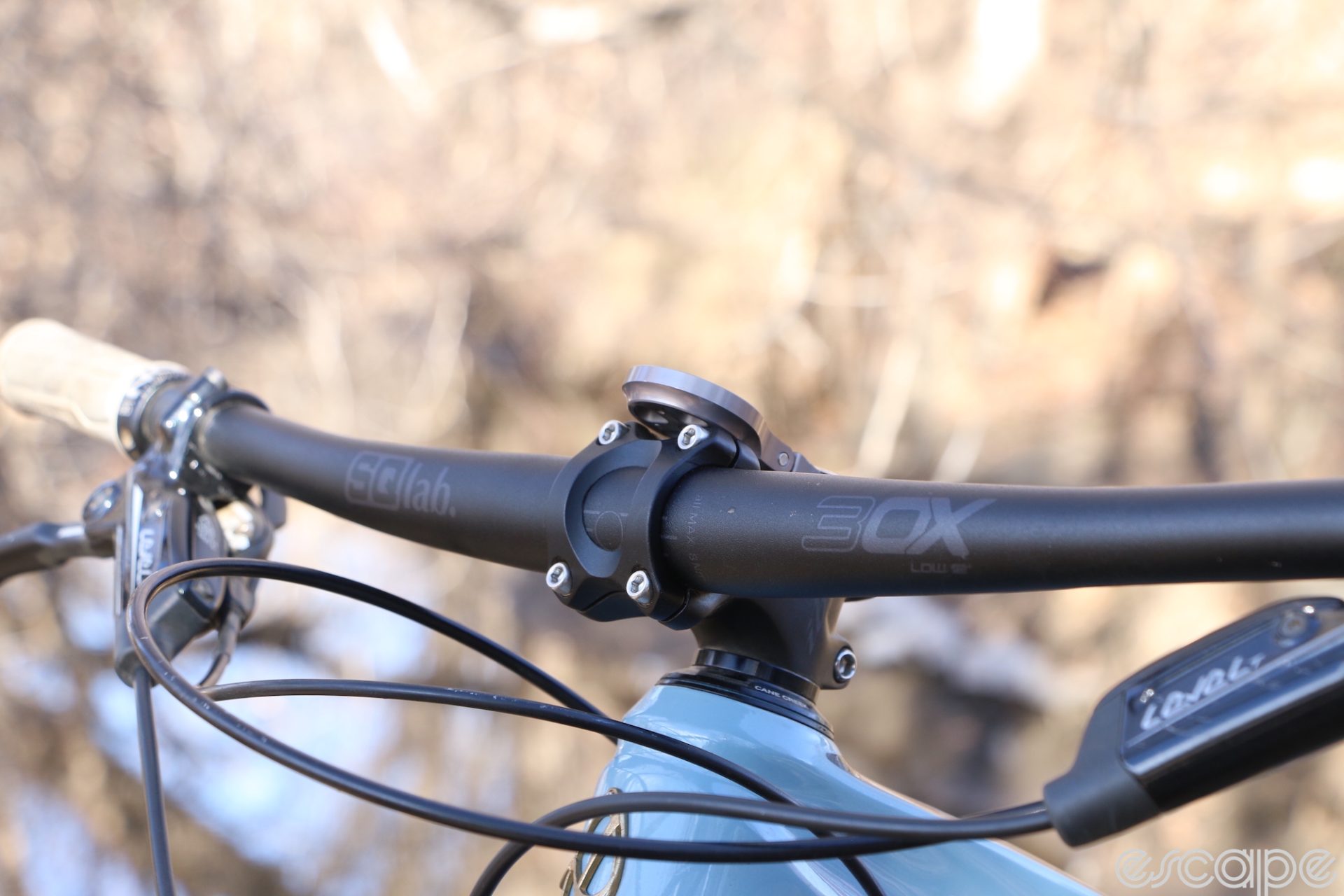
SQ Lab 30X 12° handlebar
Where drop bars today seem to come in a nearly endless variation of width, reach, drop, and flare combinations, mountain bike handlebars do not: you can get different rises and cut them to your preferred width, but backsweep in particular has settled largely in a narrow, 8-10° range.
That doesn’t make much sense for bike fit, especially in an age where we’re all riding stubby stems and reach dimensions have shot out the past decade about 20-30 mm, putting me – and others, I’d guess – in a weird purgatory between bike sizes. Enter SQ Lab. The German brand is one of the few companies making quality handlebars in a wider range of options: specifically 15, 30, and 45 mm-rise bars in carbon and aluminum with backsweeps of 9, 12, and 16°.
I run the aluminum 30X in a mid-rise, 12° backsweep. It’s been essential to helping solve two persistent problems: hand numbness on longer rides, and the sense that my otherwise-fantastic Ibis Ripley (V4) feels floppy climbing on the old-school, super-narrow, techy singletrack I like to ride. I bought the aluminum bar because it was an experiment, and I wanted to stay affordable. The 30X is made for gravity riding, so it’s a pretty burly handlebar at 330 g (740 mm width). If you’re looking for compliance, the 311 model is a better bet, but only the carbon version is offered with 12° or 16° backsweep options. Be warned: SQ Lab bars are pricey, especially its carbon versions compared to the competition.
That said, I’ve been quite happy with the 30X in aluminum and, when it comes to weight-bearing components, I like a little burly over-builtness in a #keepyourteeth kind of way. Would I buy it for another bike? I would (maybe in carbon if I win the Mega Millions), and a product I’d put on multiple bikes is, to me, as good a standard for a Favorite Thing as any.
Price: €120 (ships international, currency conversion)
www.sq-lab.com
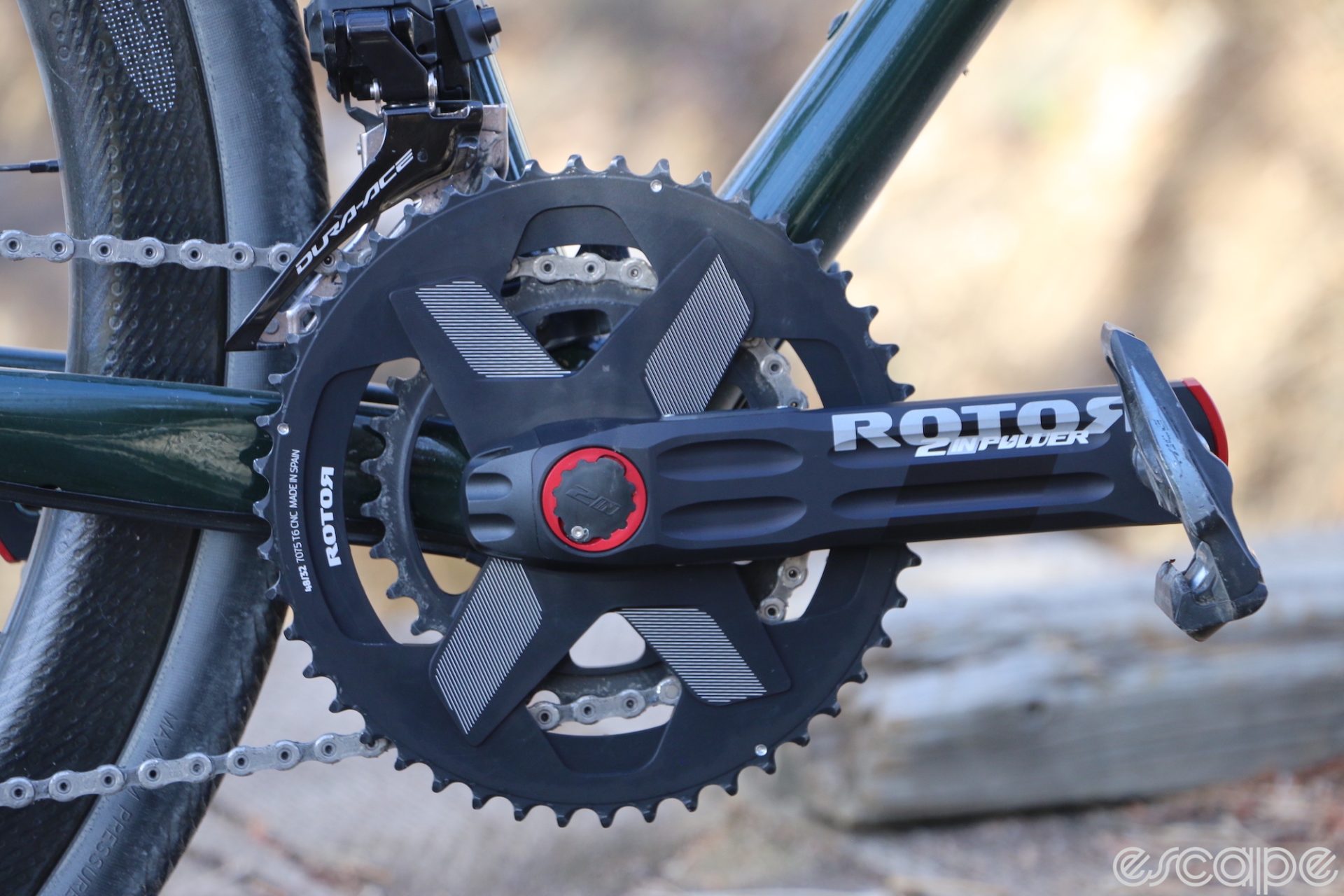
Rotor 2InPower power meter
Speaking of speculative fit-based purchases, this was absolutely a Hail Mary, albeit a calculated one: dropping $800 for a (sale) power meter crankset I’d never ridden, in a different length than I have ever used. Why on earth would I – a person who has not raced in over a decade – do such a thing?
Knee pain.
Specifically, knee pain that I suspect comes from three-plus decades of turning 172.5 mm crankarms, a length selected en masse by product managers based on the received wisdom of anachronistic fit ideas with zero regard for the actual anatomical needs of a wide range of body types. I wanted a shorter crankarm to open my hip angle and reduce knee flexion, and while the newest version of my Quarq unit is offered down to 165mm, neither the four- or five-arm (110mm) spider options will fit chainrings smaller than 34 teeth, and me and my sore knees want a suitably low gear for some of the steeper dirt climbs around Boulder.
That matters because, in reducing crankarm length, you shorten the lever arm, which makes a given gear feel larger. On the 165 mm arm I’m now riding (4% shorter than a stock 172.5 mm arm), a 34-tooth ring feels closer to a 36 (note: if you’re doing gear calculations you will only see this difference in gain ratio units; neither gear inches or meters development take crankarm length into account). I wanted independent L/R measurement. That rather long set of requirements leaves Rotor as pretty much the only option.
Both the 2InPower and new 2InPower SL come in four sizes from 165-175 mm and can use the same direct-mount rings, available from 46/30 sizes up, in oval and round. The rings are CNC-machined as one unit, so you can’t buy separates. My 165 mm arms seem plenty stiff and shift well on my Di2 drivetrain, although I think they’re slightly noisier than the Shimano 9000 rings on my old Quarq DFour. Power measurement is reliable and precise and helps me track any L/R imbalance, the battery is long-lasting, and the dust cover for recharging seems to keep out water and grit quite well.
Fit changes were surprisingly minor: I raised my seat height 7.5 mm to compensate for the shorter cranks, but saddle setback is almost identical, and I haven’t had to add stem spacers to adjust reach or seat-to-bar drop (we’ll see if that holds). After about four months on the new arms, I’ve noticed a slight improvement in knee pain, both on and after rides. It’s subtle, and I’m under no illusions that I will quickly or fully repair three decades of joint wear and tear. But I’m cautiously encouraged enough that I’m going to swap my road cranks as well, and if I didn’t already have power meter pedals on that bike, the 2InPower would be my first choice.
Price: US $773 (arms/spindle only) or $1,275 (with rings) / €699 (arms/spindle only) / £NA / AU $1,174 (arms only)
www.rotorbike.com

Pearl Izumi Pro AmFib shell
I’m close to breaking a cardinal rule of the Favorite Things series with this one: never to include items that are no longer available. What’s the use of taunting you by extolling the virtues of a product you can’t buy, right? The Pro AmFib shell is technically still for sale, but it’s being phased out and you may have to hunt; Pearl Izumi’s own web site has it in one color and only in small, XL, and XXL sizes. (Note: it’s a fitted piece and runs a little small.)
I own two of these. I may buy a third. It is, simply, the best cool-weather top I’ve found for Colorado’s dry winters. The softshell AmFib fabric is a nearly magical blend of warm, soft, stretchy, ventilated, windproof, and water-resistant. The cut is perfect. Paired with a good baselayer, it dumps heat and moisture well enough that I rarely get hot or sweaty on climbs, and it dries so fast that descents are never cold and clammy. I can take it from 10°C/50°F and sunny weather when paired with a lightweight, short-sleeve baselayer to just below freezing worn over a thicker, long-sleeve undergarment. The two-way zipper is agreeably burly and yet shielded at the top with what’s apparently called a zipper garage so it doesn’t chafe. Two roomy side pockets and a narrower, zippered center pocket have enough room for my ride wallet, Tattico minipump, and a hat or neck warmer.
I can usually get a couple of rides out of each piece before they need to go in the laundry, and these two tops have been through dozens of machine wash and dry cycles and have zero, zippo, zilch pilling, fraying, loose threads, or other wear. They look as new as the day I got them.
Again, I may buy a third. I don’t need a third, yet, but these are being discontinued apparently. Won’t Pearl just replace them with a new, better version? Maybe, but I’m not hopeful. I’ve had a long relationship with the brand, which has had ups and downs. For a long time, Pearl had a well-deserved rep for making affordable but shabby-looking stuff: boxy wind jackets in “Screaming Yellow” and ill-fitting shorts made of uninspiring fabric. But about a decade ago, under then-owner Shimano, Pearl started a long-term makeover. The textile technology improved dramatically, fits and styles modernized and, most encouraging, it began a concerted movement toward sustainable production, marked by a strong shift to recycled and environmentally friendly materials and packaging. The results were that some Pearl pieces of that era, like this Pro AmFib shell, are among my favorites of the hundreds of apparel items I’ve tested over the years.
Alas, those days may be coming to an end. Shimano sold Pearl in May 2022 to United Sports Brands, a holding company that owns running brand Nathan Sports. The new owners slashed Pearl’s staff, moved the remaining jobs to California, and sold off the LEED-certified Colorado HQ that opened just five years ago.
Investment in R&D appears to have slowed dramatically. There’s exactly one new item in its fall/winter line of jackets and vests and no new pants or tights. And while the sustainability messaging remains on the web site, it doesn’t seem to be a focus of the brand’s storytelling anymore; its external PR is mostly shoveling out new product drops with affiliate links. USB itself was reacquired just days ago by Norwest Equity Partners, a private equity firm that helped launch it a decade ago, and now USB and its brands will sit in Norwest’s portfolio alongside companies in the IT services, home furnishings, and consumer-packaged goods industries.
It’s too early to tell yet what the brand’s new long-term direction will be. But from what I see right now, I’m not encouraged; it looks like a classic private-equity strategy of squeezing as much revenue as possible out of an asset while investing the bare minimum. I’ll buy a product that is the last vestiges of what made late-era Pearl Izumi great, but I’m very much in wait-and-see mode before I spend my cash on anything new.
Price: US $112 (closeout)
www.pearlizumi.com
This is the third installment of our annual Favorite Things series, which will continue this week and next. Read about James Huang’s favorite products here, and of course you won’t want to miss Dave Rome’s picks either. Before you ask: no, these aren’t affiliate links.
Did we do a good job with this story?

